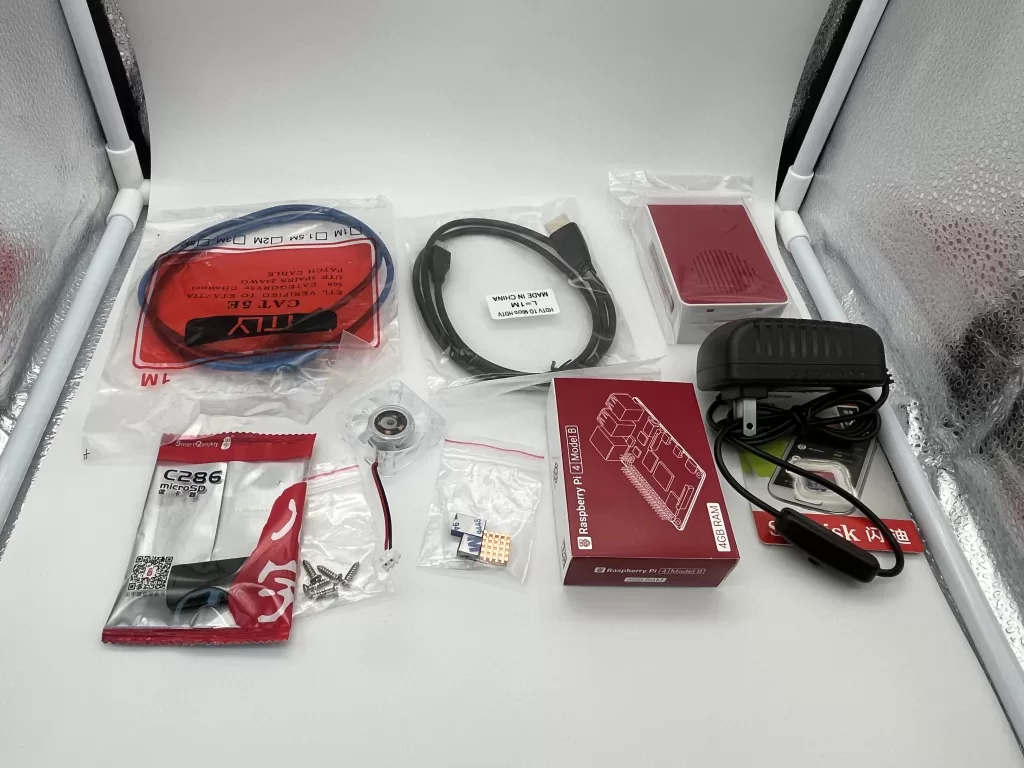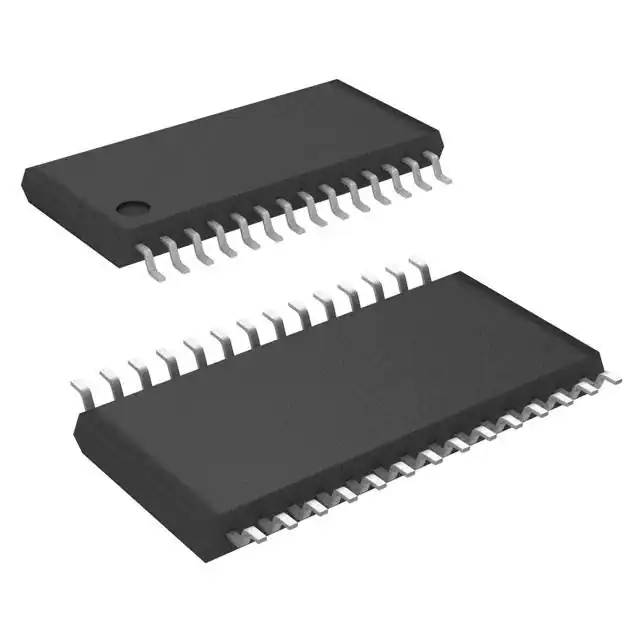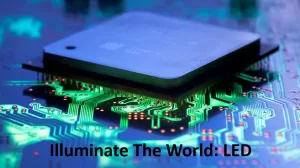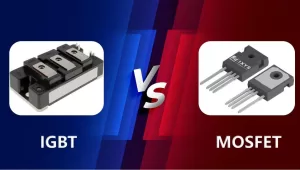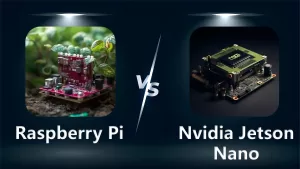This blog aims to provide a detailed understanding of multiplexers, their functions, applications, and the reasons behind their widespread use.
View detailsSystem on Chips: Design, Applications and Future
This article covers System-on-a-Chip (SoC), which combines multiple components into one chip. SoC is changing computer engineering by offering advanced functionality with less power and space. We'll look at design considerations, industry applications (like mobile and automotive), and future prospects.
What are SoCs?
A System on Chip (SoC) is a type of integrated circuit that combines all the necessary components of a computer or other electronic system onto a single chip. These components typically include a microprocessor (CPU), memory, input/output interfaces (I/O), and sometimes other specialized components such as digital signal processors (DSP) or graphics processing units (GPU).
SoCs are designed to be highly integrated and compact, with low power consumption and high performance. They are used in a wide range of electronic devices, including smartphones, tablets, wearables, automotive systems, and Internet of Things (IoT) devices.
SoCs are typically designed using specialized software tools and are optimized for specific applications or tasks. The design process involves several different stages, including architecture design, hardware and software development, simulation and testing, and verification and validation.
Overall, SoCs have revolutionized the field of electronics by enabling more compact and energy-efficient devices with high performance and advanced features.
Advantages and disadvantages of SoCs
Systems on Chips (SoCs) have become increasingly popular in recent years due to their compact size, low power consumption, and high performance. However, like any technology, SoCs also have their own set of advantages and disadvantages that must be considered when deciding whether to use them.
Advantages of System on Chips (SoCs)

Figure 1 Advantage of SoC
Compact size
SoC integrates multiple components, such as the processor, memory, input/output interfaces, and peripherals, onto a single chip. This consolidation of functionality into a compact form factor saves physical space on the circuit board. In applications where size is a constraint, such as mobile devices or embedded systems, the compact size of SoC allows for more efficient use of limited space. (Space efficiency)
With a smaller physical footprint, SoCs generally require less power to operate compared to systems that use discrete components. Reduced power consumption leads to longer battery life in portable devices and lower energy costs in general. This advantage is particularly important in mobile devices, where power efficiency is crucial for prolonged usage. (Power efficiency)
The compact size of SoC enables shorter interconnect paths between different components on the chip. This results in reduced signal delays, improved data transfer rates, and lower latency. The integration of components on a single chip also minimizes the need for external connections, reducing potential signal interference and improving overall system performance. (Enhanced performance)
By integrating multiple functions into a single chip, SoC reduces the need for additional components, connectors, and circuit board space. This simplification of the overall system design can lead to lower manufacturing and assembly costs. Additionally, the smaller form factor of SoCs can result in savings in terms of packaging, storage, and transportation costs. (Cost-effectiveness)
The compact size of SoC reduces the number of external connections, which can be potential points of failure or damage. With fewer external components, SoCs are generally more resistant to physical stress, such as vibrations or shocks, making them more reliable and durable in various applications. (Reliability and durability)
Low power consumption
In battery-powered devices such as smartphones, tablets, wearables, and IoT devices, power efficiency is crucial to maximizing the device's operational time. SoCs are designed to optimize power consumption by integrating various components onto a single chip. This consolidation reduces power losses associated with inter-component communication and eliminates the need for separate power management circuitry, resulting in longer battery life. (Extended battery life)
Lower power consumption not only benefits battery-powered devices but also leads to reduced energy costs in general. Devices that operate on lower power draw less energy from the power grid, resulting in energy savings over time. This is particularly important in applications where the large-scale deployment of devices is involved, such as data centres or smart buildings, where cumulative power savings can be significant. (Reduced energy costs)
Power consumption directly influences the heat generated by electronic devices. SoCs with lower power consumption produce less heat, reducing the need for complex cooling mechanisms. This simplifies thermal management, lowers the risk of overheating, and improves the overall reliability and lifespan of the device. (Thermal management)
The lower power consumption of SoCs contributes to a reduced carbon footprint and environmental impact. By minimizing energy consumption, devices equipped with power-efficient SoCs consume fewer natural resources and reduce greenhouse gas emissions associated with energy production. (Environmental impact)
SoCs with lower power consumption can be used in devices with smaller form factors or limited cooling capabilities. These include wearables, Internet of Things (IoT) devices, and other compact electronic systems where power constraints and heat dissipation challenges exist. By operating efficiently within these constraints, SoCs enable the development of smaller, sleeker, and more portable devices. (Form factor flexibility)
High performance
SoC integrates various components, such as the processor, memory, input/output interfaces, and peripherals, onto a single chip. This consolidation of functionality allows for more efficient communication and data transfer between components. With reduced interconnect delays and improved signal integrity, SoCs can achieve higher performance compared to systems that use discrete components. (Integration of multiple components)
The integration of components on a single chip reduces the distance that signals need to travel. This leads to shorter interconnect paths, which result in reduced signal propagation delays and improved overall system performance. Shorter interconnects also minimize signal degradation and interference, enabling higher data transfer rates and lower latency. (Shorter interconnect paths)
SoCs often incorporate dedicated on-chip buses or interconnect architectures optimized for high-speed data transfer. These buses provide efficient communication channels between different components, allowing for faster and more reliable data exchange. By eliminating the need for external connectors and interfaces, SoCs further reduce latency and improve performance. (Dedicated on-chip buses)
SoCs can be designed and optimized for specific applications or workloads. Designers can tailor the architecture, instruction set, and on-chip resources to maximize performance for the target application. This customization enables SoCs to deliver high-performance computing capabilities, making them suitable for demanding tasks such as artificial intelligence, multimedia processing, gaming, and data-intensive applications. (Customization and optimization)
SoCs often incorporate multicore processors or specialized co-processors that enable parallel processing. This parallelization of tasks allows for improved performance by distributing the workload across multiple cores or accelerators. SoCs can leverage parallel processing to execute computationally intensive tasks more efficiently, resulting in higher overall system performance. (Parallel processing capabilities)
SoCs are typically manufactured using advanced semiconductor fabrication processes, such as FinFET or nanoscale technologies. These processes allow for the integration of more transistors and on-chip components, resulting in higher computational power and improved performance per watt. The use of advanced manufacturing technologies enables SoCs to push the boundaries of performance and deliver cutting-edge capabilities. (Advanced manufacturing technologies)
By integrating multiple components onto a single chip, SoCs can provide high performance and processing power, making them well-suited for demanding applications such as gaming, multimedia, and data processing.
Customizable and flexible
SoCs can be customized and optimized to meet the specific requirements of a particular application or use case. Designers have the flexibility to select and integrate the necessary components, peripherals, and interfaces onto a single chip. This customization allows for efficient resource allocation, power optimization, and performance tuning, resulting in a highly tailored solution for the target application. (Application-specific optimization)
SoCs simplify system design by consolidating multiple components onto a single chip. This integration reduces the number of external connections, connectors, and circuit board space required. The reduced complexity leads to easier system integration, lower manufacturing costs, and improved reliability. Additionally, the smaller form factor of SoCs enables the development of compact and space-efficient devices. (Reduced system complexity)
SoCs offer scalability, allowing designers to create a range of products with varying levels of performance and features based on a common platform. By selecting different configurations or adding/removing specific IP blocks, designers can create SoCs that cater to different market segments or customer requirements. This scalability facilitates efficient product development and faster time-to-market for new devices. (Scalability)
SoCs enable rapid prototyping and innovation by providing a flexible platform for designing and testing new ideas. Designers can quickly modify and iterate on the chip's architecture, functionality, and performance to meet evolving market needs. This flexibility allows for shorter development cycles, faster validation, and efficient exploration of design alternatives. (Faster innovation and prototyping)
SoCs can integrate specialized hardware accelerators, co-processors, or dedicated IP blocks that are specifically designed for certain tasks or algorithms. This integration enables the efficient execution of computationally intensive or specialized functions, such as machine learning, image processing, audio/video encoding, or cryptographic operations. By including these specialized components, SoCs offer improved performance and energy efficiency for targeted workloads. (Integration of specialized functionality)
SoCs can be designed to support a wide range of standards, protocols, and interfaces. This flexibility ensures compatibility with existing and emerging technologies, allowing devices to communicate and interact seamlessly with other systems. SoCs can incorporate interfaces for wireless communication, data transfer, sensor integration, and various industry-specific protocols, making them adaptable to different application domains. (Support for evolving standards and interfaces)
Overall, the customizability and flexibility of SoCs empower designers to create highly optimized solutions, simplify system design, enable scalable product development, foster innovation, integrate specialized functionality, and support evolving standards. These advantages make SoCs a versatile platform for developing a wide range of applications across industries.
Cost-effective
SoCs integrate multiple components onto a single chip, eliminating the need for separate chips or discrete components. This consolidation reduces the overall component count in a system, resulting in lower manufacturing, assembly, and inventory costs. Fewer components also simplify the supply chain and reduce the risk of component shortages or obsolescence. (Reduced component count)
The integration of components onto a single chip reduces the complexity of the overall system design, leading to simplified manufacturing processes. SoCs typically require fewer manufacturing steps, which translates into cost savings during fabrication. Additionally, the smaller form factor of SoCs reduces material costs, such as the cost of packaging, connectors, and circuit boards. (Lower manufacturing costs)
SoCs simplify system integration by providing a unified platform with integrated components. This reduces the time and effort required for system design and integration, resulting in cost savings during development. The standardized interfaces and interconnects within SoCs also minimize compatibility issues and facilitate efficient integration with other system components. (Streamlined system integration)
SoCs are often designed to optimize power consumption, resulting in energy savings. Lower power consumption leads to reduced energy costs over the lifetime of a device or system. This advantage is particularly important in applications where power efficiency is critical, such as battery-powered devices or systems deployed at scale. (Lower power consumption)
SoCs can be designed as scalable platforms with reusable IP blocks and architectures. This allows for the development of multiple products with varying levels of performance and features based on a common SoC platform. The reuse of design elements and IP blocks reduces development costs and enables faster time-to-market for new products. (Design reuse and scalability)
The compact size of SoCs saves physical space on the circuit board. This space efficiency can result in cost savings in terms of smaller form factor designs, reduced packaging costs, and optimized use of available space in devices or systems. (Space efficiency)
SoCs, with their integration of components and optimized architectures, can deliver higher performance per watt compared to systems using discrete components. This increased efficiency translates into cost savings in terms of reduced power requirements, lower cooling costs, and improved overall system performance. (Performance per watt)
Overall, the cost-effectiveness of SoCs is achieved through reduced component count, lower manufacturing costs, streamlined system integration, lower power consumption, design reuse and scalability, space efficiency, and improved performance per watt. These advantages make SoCs an attractive choice for various applications, enabling cost savings throughout the product lifecycle.
Disadvantages of System on Chips (SoCs)
- Complexity: SoC design and development can be complex and time-consuming, requiring specialized skills and resources.
- Integration challenges: Integrating multiple components onto a single chip can create challenges in terms of compatibility, performance, and reliability.
- Limited upgradability: SoCs are designed for specific applications or tasks, making it difficult to upgrade or modify them without significant redesign and development.
- Potential for design flaws: SoCs can be vulnerable to design flaws or errors that can affect performance, security, or reliability.
- High development costs: Developing SoCs can be expensive, particularly for small-scale or custom designs, which may not be cost-effective for low-volume production.
What is the Significance of SoCs in Modern Technology?
The significance of Systems on Chips (SoCs) in modern technology cannot be overstated. SoCs have enabled the development of smaller, more energy-efficient devices with high performance and advanced features, making them essential components in a wide range of electronic devices, including smartphones, tablets, wearables, and Internet of Things (IoT) devices. SoCs have also revolutionized industries such as automotive, healthcare, and manufacturing, enabling new applications and capabilities that were previously impossible.
SoCs have several significant advantages over traditional circuit designs. They are highly integrated, combining multiple components onto a single chip, which reduces the size and complexity of electronic devices. SoCs are also energy-efficient, consuming less power than traditional circuit designs, which is essential for portable devices with limited battery life. SoCs also provide high performance and processing power, making them well-suited for demanding applications such as gaming, multimedia, and data processing.
The significance of SoCs can be seen in their impact on various industries.
| Application Scenario | Functions |
| Mobile device industry | SoCs have enabled the development of thin, lightweight devices with long battery life and advanced features such as facial recognition and augmented reality. |
| Automotive industry | SoCs are enabling advanced driver assistance systems (ADAS), infotainment systems, and other features that enhance safety, comfort, and convenience. |
| Health care industry | SoCs are being used in wearable sensors, implantable devices, medical imaging, and diagnostics, enabling precise control and monitoring of medical conditions. |
SoCs are also essential components in the Internet of Things (IoT), enabling connectivity, sensing, and processing capabilities that are essential for IoT applications. SoCs are being used in smart homes, industrial automation, and other IoT applications, enabling new levels of automation, efficiency, and productivity.
Overall, the significance of SoCs in modern technology lies in their ability to enable high performance, energy efficiency, and advanced features in a wide range of electronic devices, and to drive innovation and transformation in various industries. SoCs will continue to play a critical role in shaping the future of technology and driving progress in various fields.
System on Chips Design
The design process for a System on Chip (SoC) is a complex and multi-stage process that involves several steps. Here are the typical stages in the design process for an SoC:
Architecture Design: In this stage, the overall architecture of the SoC is designed, including the selection of various components such as CPU, GPU, memory, I/O interfaces, and other specialized components. The design is optimized for the specific application or task that the SoC is intended for, taking into consideration factors such as performance, power consumption, cost, and size.
Hardware Development: In this stage, the hardware components of the SoC are developed, including the design of the individual components, the interconnections between them, and the overall layout of the chip. This stage also involves the selection of the fabrication process and the development of the physical chip.
Software Development: In this stage, the software components of the SoC are developed, including the firmware, operating system, device drivers, and other software components. This stage also involves the selection of the appropriate software tools and programming languages for the specific application or task.
Simulation and Testing: In this stage, the SoC is simulated and tested using specialized software tools to ensure that it meets the desired performance and power consumption requirements. This stage also involves the identification and correction of any design flaws or errors.
Verification and Validation: In this stage, the SoC is verified and validated to ensure that it meets the required specifications and standards. This stage involves a series of tests and evaluations to verify the functionality, performance, reliability, and security of the SoC.
Overall, the design process for a System on Chip is a complex and iterative process that involves multiple stages of development, testing, and optimization. The design process requires specialized skills and resources, including expertise in hardware and software development, simulation and testing, and verification and validation. The goal of the design process is to create an SoC that is optimized for the specific application or task, providing high performance, energy efficiency, and advanced features.
Applications of System on Chips
Systems on Chips (SoCs) have a wide range of applications in various industries and fields. Here are some of the most common applications of SoCs:
Mobile Devices: SoCs are widely used in smartphones, tablets, and other mobile devices, enabling high-performance processors, graphics, and connectivity features. SoCs have enabled the development of thinner and lighter devices with longer battery life, while also supporting advanced features such as facial recognition, augmented reality, and high-quality cameras.
Automotive: SoCs have become increasingly important in the automotive industry, enabling advanced driver assistance systems (ADAS), infotainment systems, and other features that enhance safety, comfort, and convenience. SoCs are also being used in electric vehicles to manage battery power and optimize energy efficiency.
Healthcare: SoCs are used in a wide range of medical devices, from wearable sensors to implantable devices, where they enable precise control and monitoring of medical conditions. SoCs are also being used in medical imaging and diagnostics, enabling high-quality imaging and analysis of medical data.
Internet of Things (IoT): SoCs are a critical component in IoT devices, enabling connectivity, sensing, and processing capabilities that are essential for IoT applications. SoCs are being used in smart homes, industrial automation, and other IoT applications, enabling new levels of automation, efficiency, and productivity.
Industrial Automation: SoCs are used in industrial automation applications, enabling control and monitoring of manufacturing processes and machinery. SoCs are also used in robotics and other automation applications, enabling high-performance control and sensing capabilities.
Gaming: SoCs are widely used in gaming devices, enabling high-performance graphics and processing capabilities. SoCs are also used in virtual reality and augmented reality applications, enabling immersive and interactive experiences.
Overall, the applications of SoCs are diverse and widespread, enabling high performance, energy efficiency, and advanced features in a wide range of electronic devices. SoCs are driving innovation and progress in various industries and fields, and their importance is likely to continue to grow in the years to come.
What is the Future of System on Chip(SoC)?
The future of System on Chip (SoC) is exciting, with continuous advancements in technology and the integration of new capabilities. Here are some of the key trends and developments that are shaping the future of SoCs:
Increased Integration: SoCs are becoming more integrated, with more components being combined onto a single chip. This trend is likely to continue, with SoCs becoming more specialized and optimized for specific applications, enabling even smaller and more powerful electronic devices.
Artificial Intelligence: SoCs are being designed specifically for artificial intelligence (AI) applications, enabling advanced machine learning and deep learning capabilities. The integration of AI into SoCs will enable the development of smarter and more autonomous electronic devices.
5G Connectivity: SoCs are being designed to support 5G connectivity, enabling faster and more reliable wireless communication. This trend is likely to continue, with SoCs becoming even more optimized for 5G connectivity in the future.
Edge Computing: SoCs are being used for edge computing applications, enabling the processing and analysis of data at the edge of the network, closer to the source of the data. This trend is likely to continue, with SoCs becoming even more specialized for edge computing in the future.
Energy Efficiency: SoCs are becoming more energy-efficient, consuming less power and extending battery life in portable devices. This trend is likely to continue, with SoCs becoming even more energy-efficient in the future, enabling new applications and capabilities.
Security: SoCs are being designed with increasingly advanced security features, such as hardware-level encryption and secure boot. This trend is likely to continue, with SoCs becoming even more secure in the future, enabling more secure and trustworthy electronic devices.
Overall, the future of SoCs looks promising, with advancements in integration, energy efficiency, AI, 5G connectivity, edge computing, and security. SoCs are likely to continue to drive innovation and progress in various industries and fields, enabling new applications and capabilities that were previously impossible.
Conclusion
In short, Systems on Chips (SoCs) have revolutionized the electronics industry, enabling the creation of smaller, more powerful, and energy-efficient electronic devices. SoCs have a wide range of applications, from mobile devices to healthcare, and are driving innovation and progress in various industries and fields.
The design process for an SoC is complex and multi-stage, involving several steps such as architecture design, hardware development, software development, simulation and testing, and verification and validation. SoC designers must consider factors such as performance, power consumption, cost, and size to optimize the design for the specific application or task.
SoCs are expected to drive innovation in various industries with continuous advancements in technology and new capabilities like AI, 5G connectivity, edge computing, and security. This will enable new applications and capabilities that were previously impossible.
As we look towards the future, it is clear that SoCs will play a critical role in shaping the way we live and work. From smart homes to autonomous vehicles to advanced medical devices, the possibilities are endless. SoCs are the building blocks of the future, and we can only imagine what exciting new developments are yet to come.
Becky
Becky is a technical writer who are interested in writing some professional and original articles. She spent some time working in some electronic sector, but her main area of interest is the use of AI in edge computing. The rest of the time, she write or program about technology-related articles pertaining to the Internet of Things, GPU computing, LoraWAN, PCB, Machine Learning, Precision Agriculture, Open Electronics, and similar areas.
WEW ALL POSTS BYBecky-
Understanding the Basics of Multiplexers: A Comprehensive Guide 161
-
Illuminate The World: LED (Light Emitting Diode) 367
The advent of LEDs in the modern era has brought about a significant shift in the way we illuminate our environment, thereby transforming the light...
View details -
A Step-by-Step Guide on Fuseholder Installation 159
In this blog, we will delve into the world of fuseholders, covering everything from their functionality to installation procedures.
View details -
MOSFET vs IGBT: Which One is Better? 380
High-power electrical signals are controlled and switched by Mosfets (Metal-Oxide-Semiconductor Field-Effect Transistors) and IGBTs (Insulated Gate...
View details -
Unveiling AC Capacitor: What is an AC Capacitor and How Does It Work? 314
In many electrical systems, including air conditioners, AC capacitors are a crucial component. They are essential in maintaining voltage stability ...
View details -
Raspberry Pi vs Nvidia Jetson Nano: Which is Better? 199
The Raspberry Pi and the Nvidia Jetson Nano are two titans in the single-board computer (SBC) space. Although they both have amazing ability, each ...
View details
 Ampheo Electronics
Ampheo Electronics